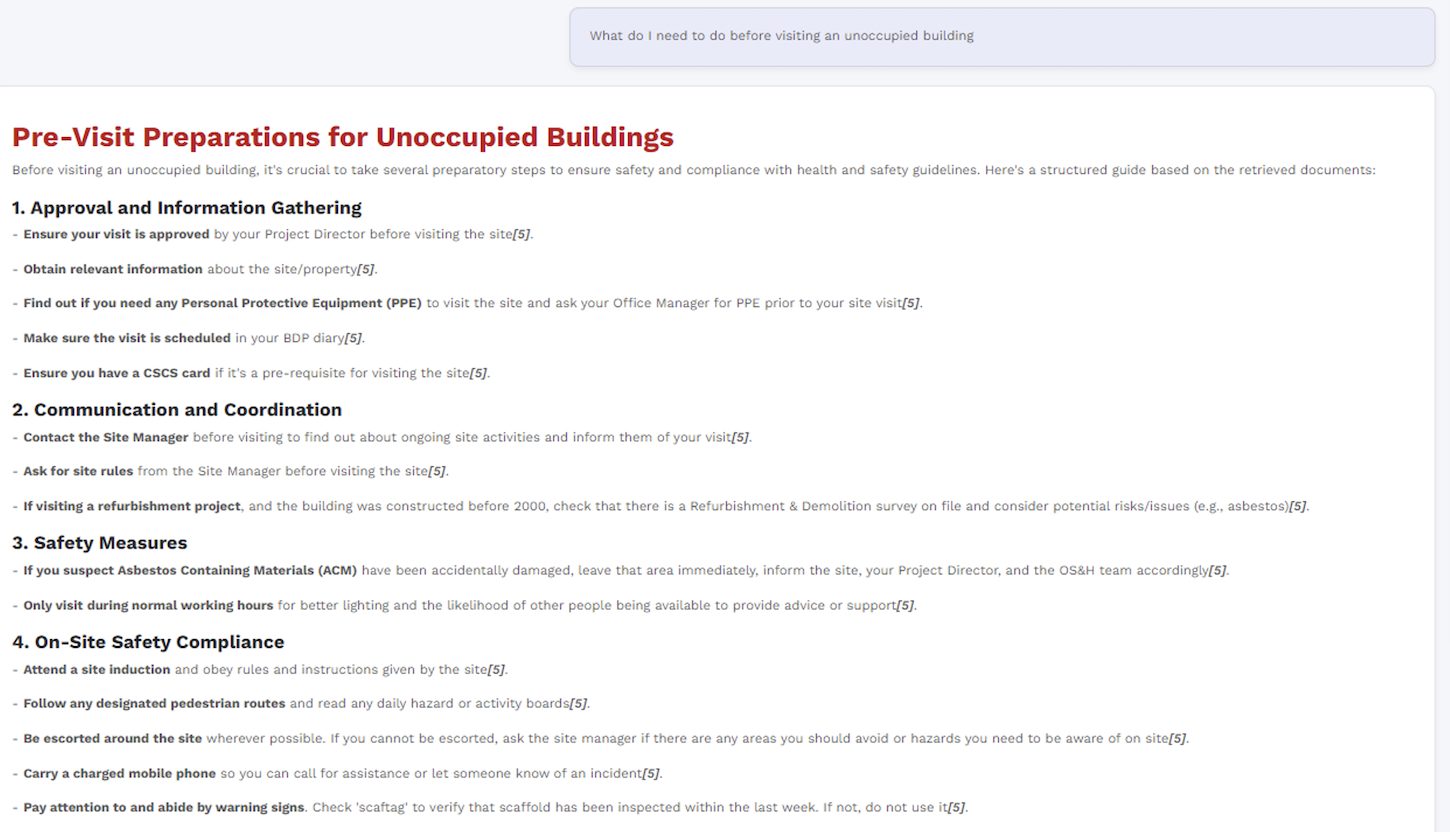
BDP has harnessed open-source AI to create a natural language tool that mines the collective knowledge of the practice. Alistair Kell, a principal and chief information officer, heralds the arrival of Chat BDP.
Since its release in November 2022, ChatGPT has certainly made its mark. It’s being used to write articles, summarise long texts, or explain complicated arguments, or even write code, for example.
These time-saving benefits of the new chatbot were not lost on BDP when it began contemplating how it could harness AI to benefit the multi-disciplinary practice.
“My experience is that everybody is immediately looking at complex modelling and generative AI for design and construction processes, which are all valuable. But they miss the easy wins,” says Alistair Kell, a principal at BDP and its and chief information officer.

“We have endless document repositories. We have a company intranet with 30,000 pages of historical documents on it. How do we make that easily available to staff?”
“If you take a step back and look at what’s happening, not within the architecture and engineering space, but within the IT space, you immediately get directed to ChatGPT, to Microsoft Copilot, and the emerging services that Microsoft is making available.
“These tools are going to bring value within any business, so the obvious question was, how can we bring these tools into BDP to provide the widest value?”
If only BDP knew what BDP knows
Also at the forefront of his mind was the adage that Kell had heard throughout his 26 years at BDP: “If only BDP knew what BDP knows.”
He explains: “We have endless document repositories. We have a company intranet with 30,000 pages of historical documents on it, and we have a design process that covers every aspect of every project control across every work stage. We have multiple company policies and much more. But how do we make that easily available to staff? At the moment, it’s all based on SharePoint and keyword searches, and it’s all very ‘of its time’.
“When the ChatGPT 3.5 engine and OpenAI became available as a service through Microsoft, I thought that might be a way we could enable staff to access the information that BDP holds in an intelligent way.”
And so, Chat BDP was born.
BIMplus: How did you build it?
Alistair Kell: We engaged a niche data science company and developed a proof of concept with a small number of documents. I demonstrated this to our chief executive and others in the business, who quickly saw the potential and value.
The development company then spent the next six weeks building out the proof of concept into an enterprise-level tool that sits in Microsoft Azure and uses the OpenAI services. It is at the stage where we are now progressively launching it.
What information have you made available on Chat BDP to date?
We’re launching it with our design and process, Process+ – I have the responsibility of making sure it’s all up to date, so it was an obvious initial place to start. We have also recently just secured our ISO 45001 occupational health and safety certification. So we’re putting all relevant documentation there to make it easy to search and access.
We’re also using it for our marketing teams. We’re putting the last six months of marketing submissions – several hundred – on the system, as well as the native documents that are referenced in them. So every time we pitch for a job or submit an award entry, it makes it easier to provide consistent information about core business services and our approach, sustainability, for example.
“One of the things that has become apparent is the need to have a full review of documentation before we make it much easier for people to access.”
Chat BDP is very easy to use. There is guidance that shows how to write an appropriate query to get the best results out of the system. And there is a selection of information sources that you can run that query against.
So, if I ask, for example, how do I assemble a team to ensure I have appropriate BIM resources across a project? I can click on certain prompts that narrows it down to the type of project and discipline and then gives me a summary of what I need to do, including training and communication strategies, monitoring and reviewing. And then it gives me the references and the detailed BDP process guidance.
One other unintended benefit of Chat BDP is that it helps with overseas clients. All our documentation is in English, but the open AI engine will automatically translate the information into 30 different languages. So any staff member can provide responses in whatever language they need.
Have there been any glitches?
The issues that we are coming up against don’t relate to the software and the services that we’ve had built; they have more to do with how accurate the information is that we’re feeding it. One of the things that has become apparent is the need to have a full review of documentation before we make it much easier for people to access. So, we are segregating the information sources, and we will only give access to additional information sources when we’re confident we’re providing the most current information.
The Building Safety Act is a key area, and we’ve recently launched a whole set of processes that were made available.
“People need to recognise that these tools will take them 60% to 80% of the way there. But you must accept that it is not providing you with the full, complete answer.”
It’s putting more information in the hands of our staff, more easily. But in doing that, you have got to make sure that the information they have access to is current and accurate.
Has developing Chat BDP been a big investment?
Not really, compared to commercial alternatives. The development cost is about 10% per person of the cost of providing an annual Microsoft Copilot licence. And the running cost is similar.
Any other thoughts on using AI tools?
People need to recognise that these tools will take them 60% to 80% of the way there. They’ll gather information for you to prepare responses and similar things. But you must accept that it is not providing you with the full, complete answer. And you must be open and honest about how you’ve produced that work.
On our system every query is logged, and so is every response, so we can go back and check what was being asked and what the results were. Then, if we start to see things that we are not confident about we can amend the documentation.
What benefits are you expecting to see?
I’m expecting two things. The first is it will save time when searching for and retrieving information. And I also expect it to help support and increase the detailed awareness of BDP policies and procedures, thereby reducing overall business risk. Beyond that, the technology is improving all the time.
What we have been able to achieve with, arguably, Microsoft’s first generation is demonstrating why we need to continue to review and invest in these tools. If you can make 90% of the business 2% more efficient, you’re getting a far greater benefit than making 1% of the team 10% more efficient!
Don’t miss out on BIM and digital construction news: sign up to receive the BIMplus newsletter.












